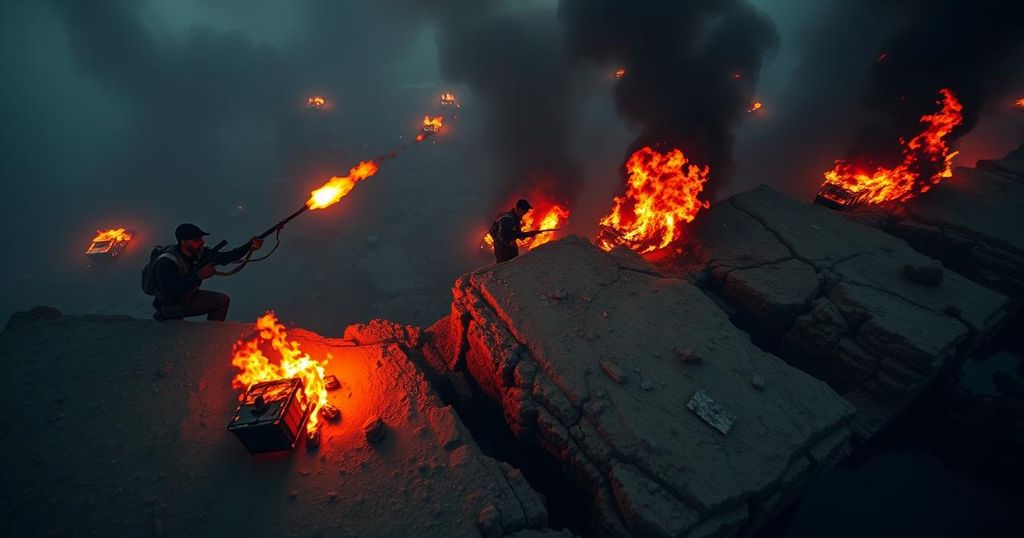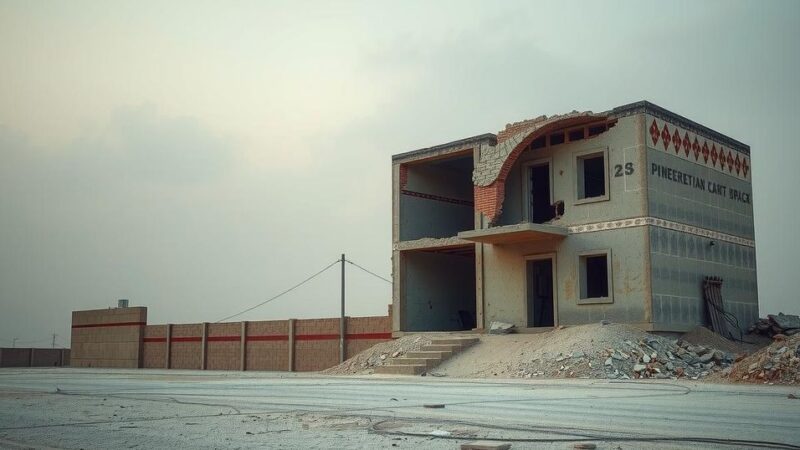Iranian-linked militias in Iraq have intensified their attacks on Israel, executing around 40 strikes utilizing missiles and drones in the past few weeks. This escalation follows Israel’s targeted airstrike against Hezbollah leader Hassan Nasrallah. With prominent factions like Hamas and Hezbollah under strain, Iran is shifting support towards less recognized groups in its proxy network, escalating the complexities of the regional conflict.
Iranian-linked militias operating within Iraq have recently intensified their offensive against Israel, executing approximately 40 missile, drone, or rocket strikes within a span of two and a half weeks. This surge in hostilities correlates with an escalation initiated following the Israeli airstrike that resulted in the death of Hezbollah leader Hassan Nasrallah on September 27th, and the broader conflict has roots dating back to the outbreak of war in Gaza last October. As documented by the Washington Institute, the pace of these attacks has notably accelerated, particularly after Israel’s actions against prominent militant leaders. With Hezbollah facing substantial pressure in Lebanon and Hamas significantly weakened after a prolonged engagement in Gaza, Tehran has redirected its support towards lesser-known affiliates within its network of allied factions. These groups are striving to showcase their allegiance to Hezbollah amidst growing concerns of being overshadowed by more prominent players in Iran’s regional strategy. Michael Knights, a noted analyst with the Washington Institute, remarks, “The number of missiles and drones being fired from Iraq [at Israel] has gone through the roof. They have moved into a higher gear to demonstrate their support for Hezbollah.” This shift exemplifies Iran’s broader strategy of leveraging its network of militias to bolster support for each faction engaged in opposition against Israel, despite the differing capabilities and extremities of each group. In addition to the Iraqi theatres, Iran’s proxies—including those in Syria and Yemen—remain engaged in activities targeting Israel. Reports indicate a potential Israeli response to the missile launch events, as tensions rise following Iran’s missile threats towards Israel. Historically, Israel has undertaken numerous airstrikes aimed at Iranian-linked targets in Syria, aiming to disrupt supply lines intended for Hezbollah. The dynamics among these militias are further complicated by recent incidents involving Hezbollah communications being compromised due to what is believed to be Israeli sabotage, thus offering intelligence agencies a glimpse into the operational networks linking Hezbollah to its Iranian backers. For instance, Israeli special forces recently conducted a raid on a suspected weapons facility in Syria, which was thought to be linked to Iranian military endeavors. Prior military operations have seen Israel targeting various Iranian installations, further increasing the complexity of the conflict across both Iraq and Syria. The Islamic Resistance of Iraq (IRI), a coalition formed in response to the ongoing conflict, has assumed responsibility for attacks directed at both Israeli and US forces in the region. The IRI’s collaborative efforts with the Houthi militia signify a strengthening of ties among Iran’s regional proxies. As tensions escalate, the situation in Iraq and Syria remains a critical yet underreported aspect of the broader Middle Eastern conflict, as articulated by analysts who caution against the neglect of these lesser-known theaters of war.
The recent hostilities involving Iran-affiliated militias in Iraq against Israel represent a significant escalation in a protracted proxy conflict in the Middle East. Iran, leveraging its geopolitical network of allied militant groups, has utilized these factions to exert influence and support across the region, particularly in light of setbacks faced by more prominent groups such as Hezbollah and Hamas. The dynamics of this conflict have evolved over time, with various regional actors adjusting their strategies in response to military actions and political developments. This context is vital for understanding the motivations behind the recent uptick in militia attacks and the implications for security in the broader Middle Eastern context.
In summary, the escalation of attacks by Iran-linked militias against Israel marks a notable increase in hostilities within an ongoing and complex proxy conflict in the Middle East. As Iranian influence is channeled through its various allied factions, including those in Iraq, Syria, and Yemen, the potential for broader regional instability intensifies. Analysts call attention to the significant implications of these developments, particularly given the interconnected operations of militant groups under Iran’s support. The evolving situation reflects the precarious balance of power in a region fraught with geopolitical tensions, underscoring the need for close monitoring and analysis of these dynamics as they unfold.
Original Source: www.theguardian.com






